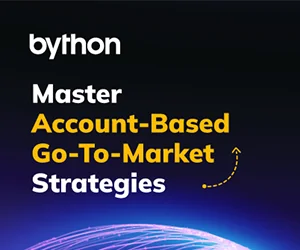The term neobank has been in use since at least the middle of the 2010s. It refers to fintech that are battling traditional banks by offering an array of financial services (as opposed to mere payments, private finance management, etc.) via low-cost digital platforms. These institutions have also been defined as “challenger banks, virtual banks, digital banks, online banks, or internet-only banks”, according to their geographic location.
Rethinking the Meaning of Neobanks
The concept of a neobank has now expanded and become a little blurrier over time. Numerous conventional banking firms have launched digital-only initiatives, and fintech have also collaborated with conventional banking institutions to offer banking services.
Today, licensed neobanks may operate as stand-alone fintech firms, digital units of conventional banking, or even as digital financial services ventures by other entities (such as Amazon). According to a recent estimate, approximately 400 licensed neobanks have launched in the previous decade, servicing almost one billion client accounts collectively.
Neobanks vs Traditional Banks: 4 Key Differences
The key distinguishing characteristic between traditional banks and neobanks is the former’s hybrid physical and online presence and the latter’s total digital presence. And, there are also the following notable distinctions:
1. Scale of Adoption
Traditional institutions are more prominent in the majority of regions because of better reach, awareness, and interconnectivity. Since neobanks are still relatively fresh on the scene and lack a physical presence to draw in fresh customers, they miss this advantage. Nevertheless, the technology-driven structure of neobanks makes them widespread among the youth of today, while it may not be as convenient for older generations.
2. Banking license
Traditional banks hold a distinct banking license and enjoy consumer confidence due to their tangible representation and stricter controls. In many regions of the globe, neobanks don’t have this advantage because they are not explicitly regulated. This difference may not apply in all countries.
3. Fintech use
The digital banking capabilities of traditional banks may not be as robust as those of neobanks, particularly in the instance of banks in the public sector. There is a greater emphasis on backroom automation instead of on customer-facing innovations. Neobanks, in contrast, focus on app-based functions aided by the most recent fintech technologies. This makes neobanking more efficient and a superior alternative to traditional banking.
4. Value-added services
Traditional banks have well-established businesses and provide a variety of non-banking services, such as vault rooms, personalized banking, relationship managers, financial services, demat wallets, ATMs, etc. Neobanks are more specialized and typically do not offer so many services under one (virtual) roof. They do, however, offer additional and new services such as “buy now, pay later” (BNPL).
How Do Neobanks Operate?
Neobanks typically employ a distinct business model when compared to conventional banks. Interchange fees, charged by vendors when customers use debit cards to make purchases, account for a significant portion of their revenue. In addition, they generate a small profit from loans and deposits, just like conventional banks. And, because neobanks are exclusively online and lack a physical location, client fees are significantly reduced, consequently accelerating user growth.
At the front end, neobanks will serve its customers through digital applications – primarily mobile apps. Due to the sophistication of these platforms, they can monitor and analyze consumer activity more effectively. Therefore, the neobanking business makes decisions based primarily on data. Instead of using just one or maybe two data elements, they group consumers based on their behavior and demographics and are better able to deliver personalized, profitable, and highly attractive services.
Some of these include:
- checking documents
- High-interest depositing accounts
- Free or discounted peer-to-peer financial transactions
- early paycheck access
- Overdraft safeguards
- Alternative ways to establish credit
- Tools for financial knowledge and planning
- API services for banking integration
In the past decade, venture capitalists have also invested heavily in neobanks, although the assessments of a few of these firms may be debatable, given that this is an emerging sector.
What Are the Benefits of a Neobank?
There are several advantages of going down the neobank route:
1. Discover a seamless, more efficient CX
Interestingly, neobanks do not provide creative or unique financial services! Their services are comparable to those of conventional institutions, but the customer experience is vastly different — hyper-enhanced and individualized. Neobanks have substantially more efficient business strategies as well as superior technologies when compared to conventional banks. This facilitates simplicity and effectiveness in services such as account creation and chatbot-supported 24/7 customer service.
2. Reduce bottlenecks and delays
Neobanks enable customers to conduct the majority of their banking 24/7 via a mobile phone app or a PC, without the need to contact a branch. Additionally, registering for a neobank account may be simpler than establishing an account at a conventional institution. For example, because some neobanks do not examine banking histories, your account is much more likely to receive approval, even if you have had an account shut down in the past. Regrettably, this may be problematic from a regulatory standpoint.
3. Trickle-down cost benefits to customers
Neobank providers are not required to pay for branch maintenance, and certain providers pass these savings on to consumers. The savings can be realized by means of low or nonexistent monthly service fees and the opportunity to earn competitive interest rates. A consumer who pays a $20 monthly charge at a commercial bank could save $240 annually by moving to a neobank with fee-free accounts.
4. Enable data-driven insights
The majority of neobanks offer dashboard solutions with interactive and dynamic interfaces. These provide useful and easy-to-understand insights for services like payments, receivables and payables, and financial records. Such insights are advantageous for B2B consumers with significant expenses and a large workforce, as they cut expenses and boost productivity.
5. Get easier access to credit
One of the distinguishing characteristics of neobanks is expeditious loan approval and disbursement. Customers are entitled to pre-approved loans if they satisfy the fundamental Know Your Customer (KYC) requirements, and some customers are also qualified for pre-approved loans. Typically, neobanks have a structured online verification and Know Your Customer (KYC) submissions process that reduces the time required for loan processing and verification.
6. Accelerate product innovation
In contrast to conventional banks, neobanks with only an AI-first attitude can initiate a new product in a matter of weeks or months. To achieve this, they invest heavily in collecting and analyzing extensive consumer data. They also maintain adaptable and configurable technology platforms that enable the creation of new products relatively easily.
Challenges to Consider
It is important to keep in mind that neobanks, like other emerging industries, face their share of growing pains.
- Not all neobanks have bank charters: Neobanks aren’t banks and are not chartered as banks. Typically, these organizations collaborate with a banker to cover/insure their products.
- You will not be able to access in-person assistance, even during emergencies: Neobanks typically do not have tangible branch locations. It is unlikely that you will have recourse to in-person support.
- There is greater exposure to cybersecurity risks: Neobanks are highly dependent on technology. They must be supported by robust systems to guarantee the safety and confidentiality of consumer information.
- Neobanks are less stable and may trickle down some of the risks to customers: Neobanks, unlike traditional banking institutions, do not always have the financial resources to navigate economic and market volatility.
- Their future is uncertain: In major international markets, many neo-banks prioritize scale over profitability. Neobanks lose on an average $11 or £9 for every user, according to Accenture, necessitating new business models for the future.
Conclusion
Neobanks are still relatively new to the banking industry, and yet their digital-first approach appeals to many consumers. They are driving ingenuity and innovation in the financial industry by offering lower fees, early payment options, and extending credit access to those who have historically lacked it — through a plethora of new and inventive ways. Despite initial challenges, neo banks remain one of the 12 most significant and industry-shaping fintech trends of our times.







